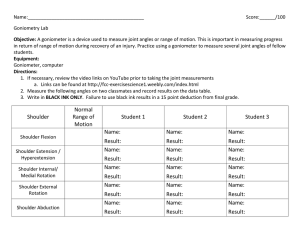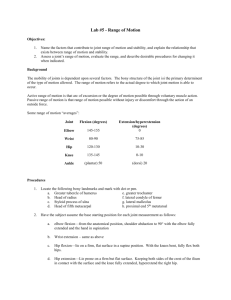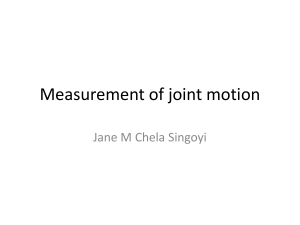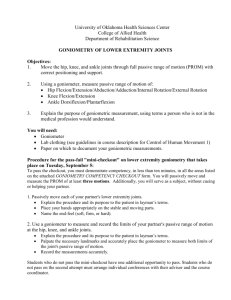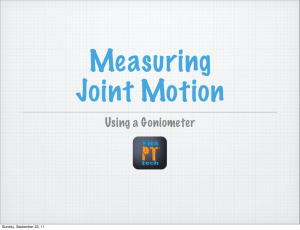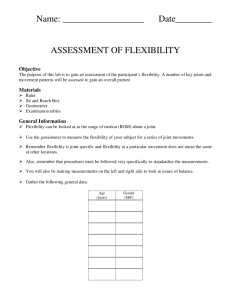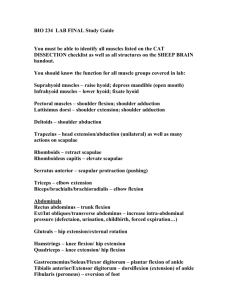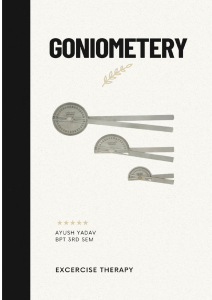Range_Motion
advertisement
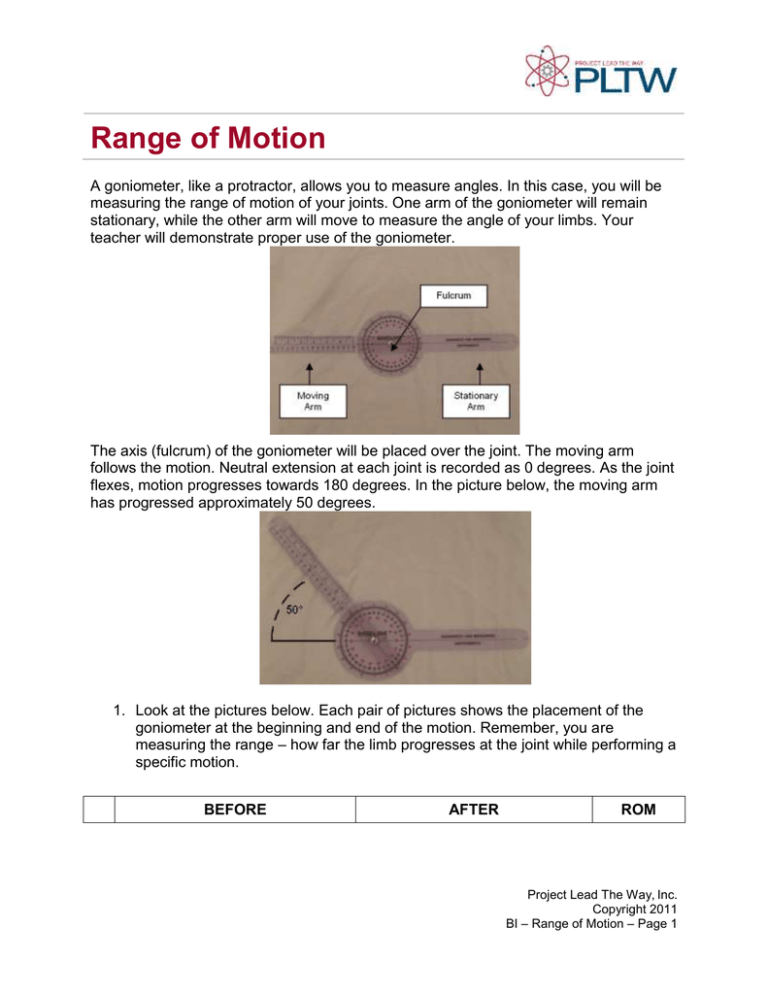
Range of Motion A goniometer, like a protractor, allows you to measure angles. In this case, you will be measuring the range of motion of your joints. One arm of the goniometer will remain stationary, while the other arm will move to measure the angle of your limbs. Your teacher will demonstrate proper use of the goniometer. The axis (fulcrum) of the goniometer will be placed over the joint. The moving arm follows the motion. Neutral extension at each joint is recorded as 0 degrees. As the joint flexes, motion progresses towards 180 degrees. In the picture below, the moving arm has progressed approximately 50 degrees. 1. Look at the pictures below. Each pair of pictures shows the placement of the goniometer at the beginning and end of the motion. Remember, you are measuring the range – how far the limb progresses at the joint while performing a specific motion. BEFORE AFTER ROM Project Lead The Way, Inc. Copyright 2011 BI – Range of Motion – Page 1 A 4 Elbow Flexion B 6 Shoulder Medial Rotation C 3 Shoulder Abduction D 7 Knee Flexion Project Lead The Way, Inc. Copyright 2011 BI – Range of Motion – Page 2 E 2 Shoulder Extension F 8 Plantar Flexion G 1 Shoulder Flexion H 10 Hip Extension 2. Let your teacher know if you are experiencing any pain in your joints or if you are limited in mobility in any way before performing any movements. 3. Before you begin data collection, read the following helpful tips: Project Lead The Way, Inc. Copyright 2011 BI – Range of Motion – Page 3 o When you are measuring range of motion, think about the path the limb takes to get to the final end position. Make sure that the angle you are measuring corresponds to this path. o Make sure the body is stabilized so only the joint in question is able to move. o Once the subject is in position, gently take their limb through the desired ROM. This passive movement provides an estimate of ROM and demonstrates to the subject the exact motion desired. o When instructed to do so, the subject should move the limb through the desired motion to the natural endpoint. Make sure the subject is not straining. This active movement shows the subject’s range of motion for this particular action. o Range of motion values can be recorded as a range - 0° - ___° or as the endpoint value. 4. Use the goniometer to take measurements. Come to consensus on where to place the goniometer to take an accurate reading. One member of the group should be the test subject. One member of the group should hold the goniometer steady while the other moves the arm and reads the angle value. Additional ROM Illustrations: Note: All illustrations are adapted from Luttgens & Hamilton, 1997. Project Lead The Way, Inc. Copyright 2011 BI – Range of Motion – Page 4 Shoulder #1 Shoulder #2 Knee Ankle Project Lead The Way, Inc. Copyright 2011 BI – Range of Motion – Page 5 Wrist #1 Wrist #2 Elbow Project Lead The Way, Inc. Copyright 2011 BI – Range of Motion – Page 6 Hip #1 Hip #2 Project Lead The Way, Inc. Copyright 2011 BI – Range of Motion – Page 7
